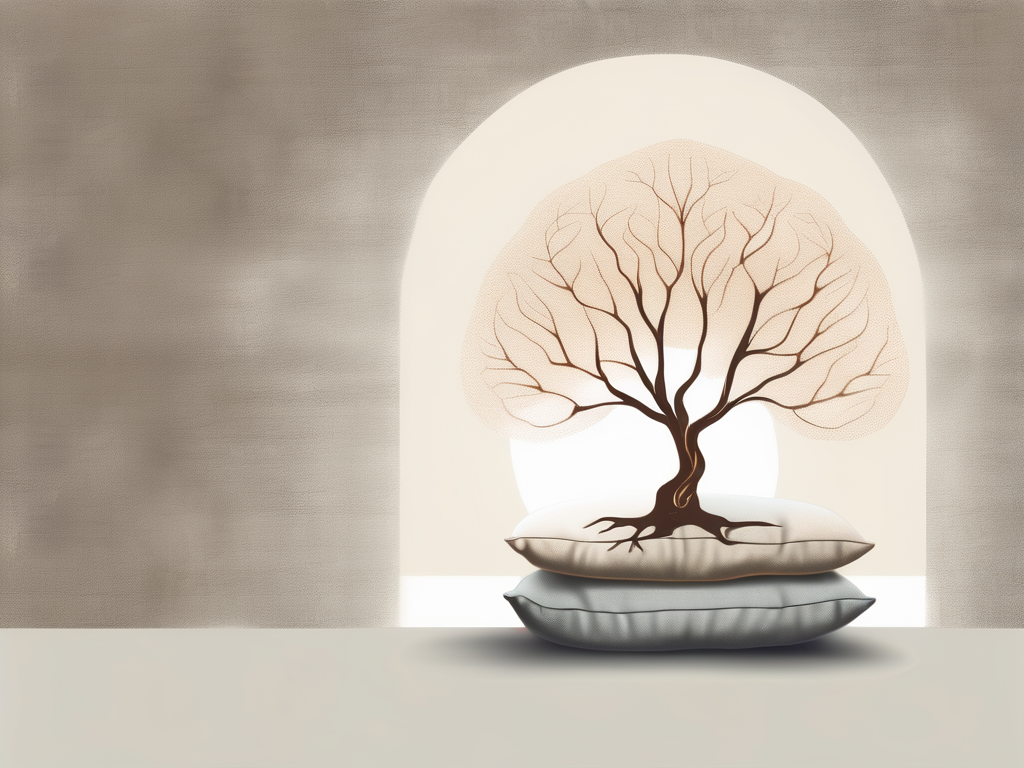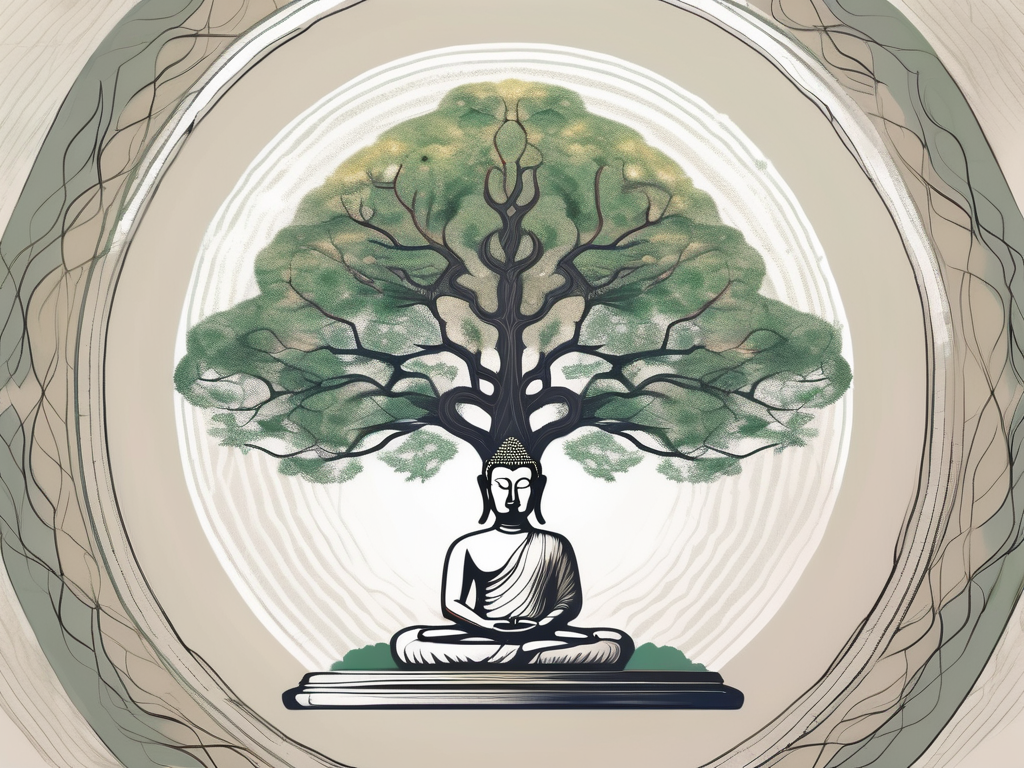Welcome to “What Is Buddhism? A Comprehensive Guidebook.” In this article, we will explore the fascinating and enlightening world of Buddhism. Whether you are curious about its origins, its teachings, its practices, or its impact on modern society, this guidebook aims to provide you with a comprehensive understanding of this ancient and influential religion.
Understanding the Basics of Buddhism
The origins of Buddhism can be traced back over 2,500 years ago in ancient India, to a man named Siddhartha Gautama. Siddhartha was born into a life of privilege, but he was deeply troubled by the suffering he witnessed in the world. Motivated by a desire to find enlightenment and alleviate suffering, he renounced his wealth and became a wandering ascetic.
For years, Siddhartha dedicated himself to meditation and self-discovery, seeking answers to life’s fundamental questions. It was under a Bodhi tree that Siddhartha finally attained enlightenment, becoming the Buddha, which translates to “the awakened one.” This momentous event marked the beginning of Buddhism as a distinct spiritual tradition.
Following his enlightenment, the Buddha devoted the rest of his life to teaching others the path to liberation from suffering. His teachings, known as the Dharma, spread throughout India and eventually reached other parts of Asia, where they took root and evolved into numerous branches and schools of thought.
The Core Beliefs and Principles of Buddhism
At the heart of Buddhism are the Four Noble Truths, which serve as the foundation of the Buddha’s teachings. These truths emphasize the universal existence of suffering and the possibility of liberation through understanding its causes and overcoming them.
Buddhism teaches that suffering arises from attachment and ignorance. By cultivating wisdom, compassion, and mindfulness, individuals can transcend suffering and achieve enlightenment. This path to enlightenment is outlined in the Fourth Noble Truth, which introduces the Eightfold Path.
The Eightfold Path consists of a set of guidelines for achieving enlightenment through ethical conduct, meditation, and the development of wisdom. It encompasses aspects such as right understanding, right intention, right speech, right action, right livelihood, right effort, right mindfulness, and right concentration.
The Different Branches of Buddhism
Throughout its history, Buddhism has branched into various traditions, each with its unique practices and interpretations of the Buddha’s teachings. Some of the most notable branches include Theravada, Mahayana, and Vajrayana Buddhism.
Theravada Buddhism, also known as the “Doctrine of the Elders,” is prevalent in Southeast Asian countries such as Thailand, Myanmar, Sri Lanka, and Cambodia. It emphasizes the individual’s pursuit of enlightenment and the monastic Sangha as a central institution. Theravada Buddhists believe that anyone can achieve enlightenment through their own efforts and practice.
Mahayana Buddhism, on the other hand, places a greater emphasis on compassion and the idea of the bodhisattva. A bodhisattva is an enlightened being who vows to help others achieve enlightenment before attaining it themselves. Mahayana Buddhism is practiced in East Asian countries such as China, Japan, Korea, and Vietnam.
Vajrayana Buddhism, often associated with Tibetan Buddhism, incorporates esoteric practices and emphasizes the transformational power of Tantric rituals. It is characterized by the presence of revered spiritual leaders known as lamas. Vajrayana Buddhism is practiced primarily in Tibet, Bhutan, Nepal, and Mongolia.
These different branches of Buddhism reflect the diverse cultural and historical contexts in which the teachings of the Buddha have been embraced and interpreted. Each branch offers its own unique approach to spiritual practice and enlightenment, providing individuals with various paths to follow on their journey towards liberation from suffering.
The Teachings of Buddha
The teachings of Buddha are a profound and enlightening philosophy that has guided countless individuals on their spiritual journey. Rooted in compassion and wisdom, these teachings offer a transformative understanding of the nature of suffering and the path to liberation.
The Four Noble Truths
The Four Noble Truths serve as the foundation of Buddhist philosophy. They offer a profound understanding of the nature of suffering and the path to liberation. By acknowledging suffering, we can begin to address its causes and ultimately find freedom from its grip.
The first noble truth is the truth of suffering. It acknowledges the existence of suffering in our lives, both physical and mental. Buddha taught that suffering is an inherent part of human existence, and by recognizing its presence, we can begin to explore its causes and seek liberation.
The second noble truth is the truth of the origin of suffering. It teaches that suffering arises from attachment and craving. Our desires and attachments to worldly things lead to suffering, as they are impermanent and subject to change. By understanding the root causes of suffering, we can begin to let go of attachment and find freedom.
The third noble truth is the truth of the cessation of suffering. It offers hope and liberation by teaching that suffering can be overcome. By letting go of attachment and craving, we can find peace and freedom from suffering. This cessation of suffering is attainable through the practice of mindfulness, compassion, and wisdom.
The fourth noble truth is the truth of the path to the cessation of suffering. It outlines the Eightfold Path as the means to liberation. The Eightfold Path provides a practical guide for living a skillful and enlightened life. It encompasses eight interconnected aspects that include Right Understanding, Right Thought, Right Speech, Right Action, Right Livelihood, Right Effort, Right Mindfulness, and Right Concentration. By adhering to the principles of the Eightfold Path, individuals can lead a virtuous and purposeful existence.
The Eightfold Path
The Eightfold Path is a comprehensive and holistic path that leads to liberation and enlightenment. It encompasses various aspects of life and provides guidance on how to live a skillful and meaningful existence.
Right Understanding is the foundation of the Eightfold Path. It involves developing a deep and accurate understanding of the nature of reality, the Four Noble Truths, and the interconnectedness of all beings.
Right Thought refers to cultivating thoughts of goodwill, compassion, and non-harming. It encourages individuals to develop a positive and wholesome mindset, free from greed, hatred, and delusion.
Right Speech emphasizes the importance of using words that are truthful, kind, and beneficial. It encourages individuals to communicate with mindfulness and compassion, avoiding speech that causes harm or discord.
Right Action involves engaging in actions that are ethical, compassionate, and non-harming. It encourages individuals to act in ways that promote the well-being of oneself and others.
Right Livelihood refers to engaging in a livelihood that is ethical and aligned with one’s values. It encourages individuals to choose a profession that does not cause harm or contribute to the suffering of others.
Right Effort involves cultivating wholesome qualities and letting go of unwholesome ones. It encourages individuals to make a sincere effort to develop positive qualities such as mindfulness, compassion, and wisdom.
Right Mindfulness is the practice of being fully present and aware in each moment. It involves observing one’s thoughts, feelings, and sensations without judgment or attachment.
Right Concentration refers to developing deep states of concentration through meditation. It allows individuals to cultivate clarity, focus, and insight, leading to a deep understanding of the nature of reality.
The Concept of Karma in Buddhism
In Buddhism, karma refers to the law of cause and effect. It teaches that our actions, intentions, and thoughts shape our future experiences. Understanding karma encourages individuals to cultivate positive intentions and actions that contribute to their spiritual development and the well-being of others.
According to the concept of karma, every action we take, whether physical, verbal, or mental, has consequences. Positive actions lead to positive outcomes, while negative actions lead to negative outcomes. Karma is not a form of punishment or reward but rather a natural law that governs the cycle of cause and effect.
Buddhism teaches that by cultivating wholesome intentions and actions, individuals can create positive karma and contribute to their own spiritual growth and the well-being of others. This includes acts of kindness, generosity, compassion, and mindfulness.
Understanding karma also encourages individuals to take responsibility for their actions and choices. It reminds us that we have the power to shape our own lives and create a positive impact on the world around us.
By practicing mindfulness and cultivating positive intentions, individuals can break free from negative patterns of karma and create a more peaceful and harmonious existence.
Buddhist Practices and Rituals
Buddhism is a religion that encompasses a wide range of practices and rituals, each with its own unique significance and purpose. From meditation and mindfulness to monastic life and festive celebrations, the Buddhist tradition offers a rich tapestry of spiritual experiences.
Meditation and Mindfulness in Buddhism
Meditation is a fundamental practice in Buddhism that allows individuals to cultivate a focused and calm mind. By sitting in silence and observing their breath or a specific object of focus, practitioners enter a state of deep concentration. Through this practice, they develop mindfulness – a state of heightened awareness and non-judgmental presence.
Mindfulness can be applied to daily life, leading to greater clarity, compassion, and peace. By bringing mindful attention to their thoughts, emotions, and actions, Buddhists aim to cultivate a sense of inner calm and understanding. This practice helps them navigate the challenges of life with equanimity and compassion towards themselves and others.
Furthermore, meditation is not limited to sitting in silence. In some Buddhist traditions, walking meditation is also practiced. This involves walking slowly and mindfully, paying attention to each step and the sensations in the body. Walking meditation offers a different way to cultivate mindfulness, bringing the practice into motion and integrating it into daily activities.
Buddhist Monastic Life
Monasticism plays a vital role in Buddhist communities. Monks and nuns renounce worldly possessions and dedicate themselves to a life of meditation, study, and service. By living a simple and disciplined life, they create an environment conducive to spiritual development.
Monastic life provides a source of inspiration and guidance for lay practitioners. The monastics serve as living examples of the teachings, embodying the principles of compassion, wisdom, and selflessness. They offer guidance to those seeking spiritual growth and provide a space for individuals to deepen their practice through retreats and teachings.
Within monastic communities, daily routines are structured around meditation, study, and communal activities. The day typically begins with early morning meditation, followed by chanting and a period of personal reflection. Throughout the day, monastics engage in various activities such as studying Buddhist scriptures, performing rituals, and engaging in community service.
Monastic life also provides an opportunity for individuals to detach from worldly distractions and focus on their spiritual journey. By renouncing material possessions and living a simple life, monastics cultivate detachment and contentment, freeing themselves from the constant pursuit of material wealth and desires.
Buddhist Festivals and Ceremonies
Buddhism is rich in colorful festivals and ceremonies that celebrate significant events and teachings. These festivals bring communities together to honor the teachings and share in the joy and compassion that Buddhism promotes.
One of the most important Buddhist festivals is Vesak, which commemorates the Buddha’s birth, enlightenment, and passing. During Vesak, Buddhists engage in various activities such as offering alms to monks, meditating, and participating in processions. The festival is marked by the lighting of lanterns, symbolizing the enlightenment of the Buddha and the spreading of wisdom.
Other festivals and ceremonies include Kathina, which involves the offering of robes to monastics, and Uposatha, a monthly observance day where Buddhists gather at temples to listen to teachings, meditate, and reaffirm their commitment to the Buddhist path.
These festivals not only provide an opportunity for Buddhists to come together as a community but also serve as a reminder of the teachings and values that form the foundation of the Buddhist tradition. They are occasions for reflection, gratitude, and renewal of spiritual commitment.
In conclusion, Buddhism offers a diverse array of practices and rituals that cater to the spiritual needs of its followers. From meditation and mindfulness to monastic life and festive celebrations, these practices serve as pathways to inner peace, wisdom, and compassion. Whether through silent contemplation or joyous festivities, Buddhists find solace and inspiration in the rich tapestry of their tradition.
Buddhism and Modern Society
The Influence of Buddhism on Modern Culture
Buddhism’s influence extends well beyond its traditional boundaries and has become a source of inspiration for individuals seeking peace, mindfulness, and personal growth in the modern world. Its teachings on compassion, non-violence, and interdependence resonate with those who strive for a more harmonious and sustainable society.
Buddhism and Interfaith Relations
With its emphasis on respect and tolerance for diverse beliefs, Buddhism plays a significant role in fostering interfaith dialogue and understanding. It encourages individuals to recognize the common values shared across different religions and promotes harmony and cooperation in our increasingly connected world.
The Role of Buddhism in Promoting Peace and Harmony
Buddhism promotes peace not only on an individual level but also within communities and the broader society. By cultivating compassion and empathy, Buddhists strive to alleviate suffering and work towards creating a more just and peaceful world. The teachings of non-violence and interdependence serve as foundations for promoting harmony and unity among diverse groups.
What Is Buddhism? A Comprehensive Guidebook provides a glimpse into the multifaceted nature of Buddhism, offering insights into its history, teachings, practices, and its relevance in our modern world. Whether you are a curious seeker or a dedicated practitioner, the wisdom of Buddhism can offer guidance, inspiration, and a path towards awakening.












